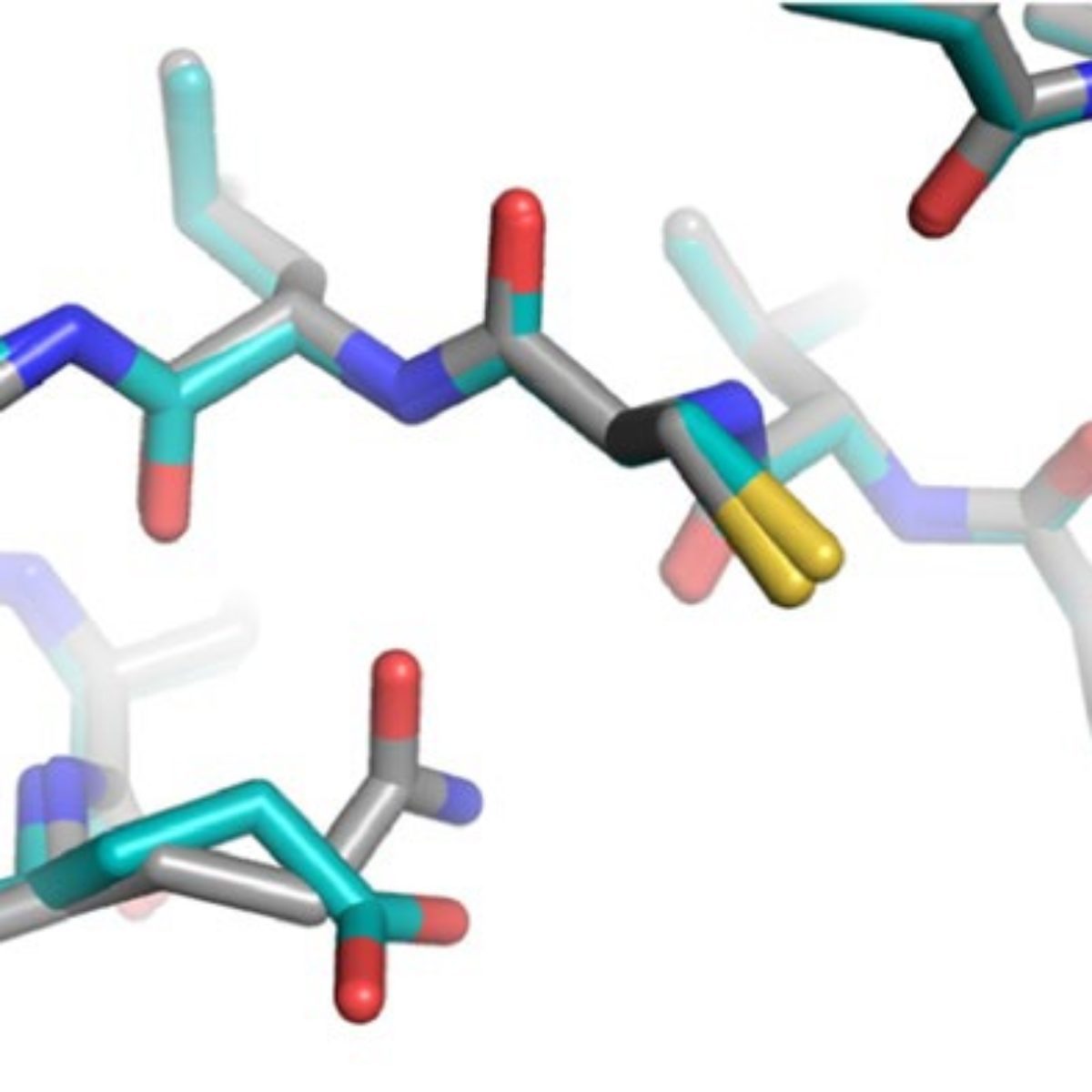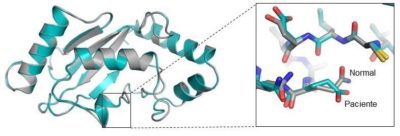
Study contributes to the understanding of mechanisms involved in neurodevelopmental disorders
Once a disease-related protein or enzyme is identified as a therapeutic target, the study of its three-dimensional structure – the positions of each of its atoms and their interactions – allows a deeper understanding of its mechanisms of action.
This is possible not only for these substances produced by microorganisms, such as viruses or bacteria, capable of attacking our body. It is also possible, for example, to understand molecules normally produced by the human body itself, but which had their structure and function altered due to some genetic mutation.
Thus, in an article recently published in Nature Chemical Biology, Juliana F. de Oliveira, of the Brazilian Biosciences National Laboratory (LNBio), and collaborators elucidates the mechanism of action of a new genetic mutation in the UBE2A gene identified in patients with intellectual disability.
The UBE2A gene is located on the X chromosome and encodes the protein of the same name that participates in the process of “labeling” defective proteins inside the cell. This labeling is done by adding and protein called ubiquitin to the defective proteins as if it were a label. Next, under normal conditions, the defective proteins are sent for degradation.
The first description of a mutation in this gene was made in 2006 and since then the syndrome has been called the X-linked intellectual disability (XLID) type Nascimento, in homage to the first author of the initial work, the Brazilian researcher Rafaella Nascimento.
The syndrome caused by mutations in this gene is poorly understood and probably underreported. It has variable manifestations of clinical features, including intellectual disability, which can vary from moderate to severe, speech impairment, convulsions and prominent dysmorphic features.
In this study, the data were obtained from the genetic sequencing analysis of a family, with two siblings affected by mild intellectual disability, attended at the Research Center on the Human Genome and Stem Cells, in the Institute of Biosciences of University of Sao Paulo.
Among the several analyzes made by the researchers, the MX2 macromolecular crystallography beamline of the Brazilian Synchrotron Light Laboratory (LNLS) was used to investigate protein structure. The team was able to uncover how the genetic mutation impacts the structure of the UBE2A protein and, consequently, changes its function.

Overlap of the patient’s UBE2A protein structure (blue) with the normal protein (gray) evidences similarity between them. On the right, it is shown in detail the only altered amino acid in the patient’s protein due to the genetic mutation.
The study shows that the chemical reaction required to transfer the ubiquitin molecule during the labeling process of defective proteins is hampered by the negative electrical charge inserted into the protein by the mutation.
When this change occurs in neurons, it is likely that problems occur that affect the correct development of the nervous system during embryogenesis as well as its functioning, causing disorders such as intellectual disability.
The understanding of the function of proteins related to neurodevelopmental disorders may be the key to the development of possible new therapies. And while it is not possible to reverse the intellectual deficiency of the siblings involved in this research, it represents an important initial step to bring improvements to the quality of life of people with intellectual disabilities caused by similar mutations.
Source: Juliana Ferreira de Oliveira, Paula Favoretti Vital do Prado, Silvia Souza da Costa, Mauricio Luis Sforça, Camila Canateli, Americo Tavares Ranzani, Mariana Maschietto, Paulo Sergio Lopes de Oliveira, Paulo A. Otto, Rachel E. Klevit, Ana Cristina Victorino Krepischi, Carla Rosenberg & Kleber Gomes Franchini, Mechanistic insights revealed by a UBE2A mutation linked to intellectual disability, Nature Chemical Biology, 15, 62–70 (2019). DOI: 10.1038/s41589-018-0177-2
Research investigates material based on poly(butylene succinate), urea and clay
Research investigates method for the production of protein crystals, based on thin films organized by an external electric field